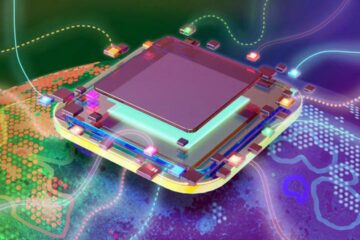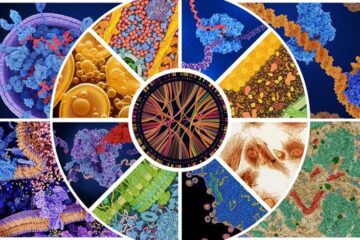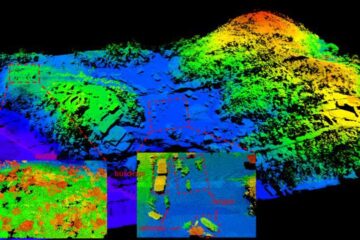New technique to optimize computer speed

Until now, this strain remained difficult to observe. Now, thanks to a new electron holography technique (1) invented by researchers at the Centre d’élaboration de matériaux et d’études structurales (CEMES-CNRS), it is possible to map deformation in a crystal lattice with a precision and resolution never previously attained.
This new patented measurement device overcomes nearly all the limitations of current methods. It should enable manufacturers to improve microprocessor production methods and to optimize future computers. This work is published in the June 19, 2008 issue of the journal Nature.
“Strained” silicon is a fundamental component of all recent microprocessors. The reason for its success is that local strain-induced deformation in the crystal lattice improves processor performance. The deformation significantly increases electron mobility, making it possible to boost computer speed and reduce energy consumption. However, since manufacturers could not analyze deformation accurately, they didn’t have complete mastery of chip design. They essentially relied on simulations and monitoring of performance without ever truly knowing the strain state. This problem has now been resolved, thanks to a new strain measurement method developed by a CNRS team in Toulouse.
Based on electron holography, the technique certainly has appeal: it makes it possible to measure deformation (compression, tension, and shear strain) in numerous materials with high precision and spatial resolution. Precision exceeds 0.1%, or 0.5 picometers (2) and spatial resolution is on the nanometer scale. But the real innovation compared to traditional techniques is that it is makes it possible to analyze larger areas (a micrometer rather than the previous 100 nanometers) with a level of precision never reached before.
This measurement technique offers further advantages. It makes it possible to study samples that are ten times thicker than previous samples (300 nm), which guarantees that observations are accurate. The thicker the sample, the less the strain is relaxed, and the closer the measured stain is to that of a real system. In addition, the measurements are taken directly, unlike other techniques that require a certain number of preliminary simulations.
This technique, patented by CNRS in September 2007, will in all likelihood become the leading method for measuring crystal lattice strain at the nanometer scale. It will optimize strain modeling in transistors and enhance their electrical efficiency.
(1) Electron holography is a technique for measuring magnetic and electric fields. The new configuration designed by the CEMES (CNRS) researchers can measure deformations in crystal lattices.
(2) A picometer equals 10-12 m.
Media Contact
More Information:
http://www.cnrs-dir.frAll latest news from the category: Information Technology
Here you can find a summary of innovations in the fields of information and data processing and up-to-date developments on IT equipment and hardware.
This area covers topics such as IT services, IT architectures, IT management and telecommunications.
Newest articles

A universal framework for spatial biology
SpatialData is a freely accessible tool to unify and integrate data from different omics technologies accounting for spatial information, which can provide holistic insights into health and disease. Biological processes…

How complex biological processes arise
A $20 million grant from the U.S. National Science Foundation (NSF) will support the establishment and operation of the National Synthesis Center for Emergence in the Molecular and Cellular Sciences (NCEMS) at…

Airborne single-photon lidar system achieves high-resolution 3D imaging
Compact, low-power system opens doors for photon-efficient drone and satellite-based environmental monitoring and mapping. Researchers have developed a compact and lightweight single-photon airborne lidar system that can acquire high-resolution 3D…





















